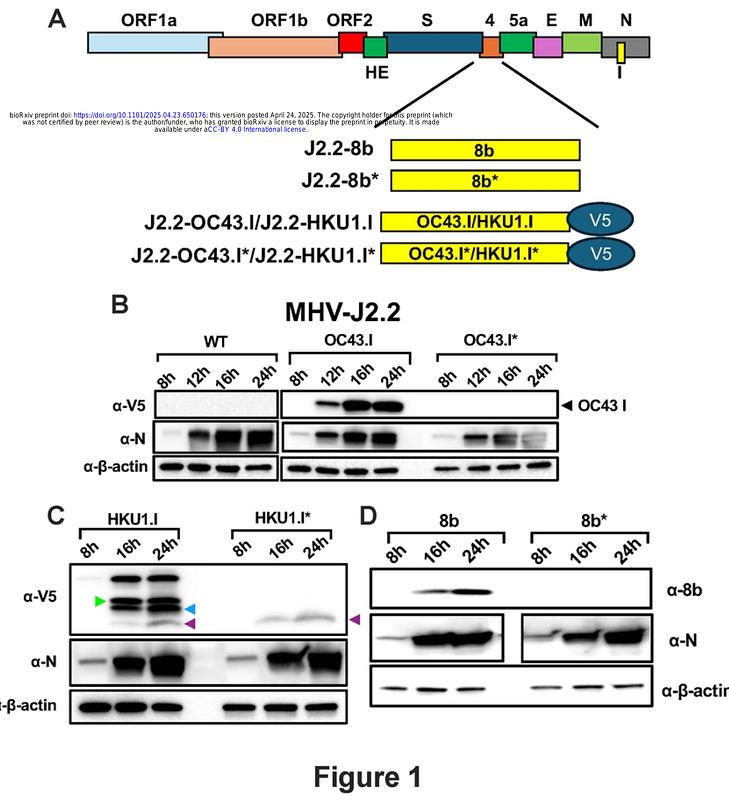Characterization of betacoronavirus HKU-1 and OC43 internal proteins using a prototypic coronavirus

Characterization of betacoronavirus HKU-1 and OC43 internal proteins using a prototypic coronavirus
Gunawardene, C. D.; Pandey, I.; Chatterjee, S.; Penaflor-Tellez, Y.; Odle, A.; Messyasz, A.; Rajsbaum, R.; Sariol, A.; Wong, L.-Y. R.
AbstractCoronaviruses express a repertoire of accessory proteins for evading host immune responses. A small internal (I) accessory protein is expressed by the genus Betacoronavirus. Previous studies reported that the I proteins of SARS-CoV, MERS-CoV and SARS-CoV-2 inhibit type I interferon (IFN-I) expression through distinct mechanisms and have different roles in pathogenesis. Human coronaviruses (hCoV) HKU1 and OC43 are betacoronaviruses that also encode the I protein as an accessory protein. Although hCoV-HKU1 and hCoV-OC43 predominantly cause common cold in healthy adults, susceptible individuals infected with these viruses can develop severe disease. However, the virulence factors contributing to pathogenesis after infection with common cold CoVs (CCCoVs) have not been fully characterized. In particular, the functions of the hCoV-HKU1 and hCoV-OC43 I proteins have not been previously reported. The lack of robust reverse genetic systems, tissue culture and animal models limit the study of hCoV-HKU1 and hCoV-OC43 pathogenesis. Here, we examine the role of the hCoV-HKU1 and hCoV-OC43 I proteins in pathogenesis using a prototypic coronavirus. We introduce the I proteins of hCoV-HKU1 and hCoV-OC43 independently to a neurotropic strain of mouse hepatitis virus (J2.2). J2.2 infection is well characterized with clearly defined immune responses which allows the study of I proteins in the context of authentic coronavirus infection. We show that the I protein of hCoV-HKU1, but not that of hCoV-OC43, ameliorates MHV-J2.2 pathogenesis while the I protein of MERS-CoV exacerbates disease. The presence of the hCoV-HKU1 I protein decreases virus titers and cytokine expression while the I protein of MERS-CoV leads to increased immune cell infiltration and virus titers in mice after J2.2 infection. Moreover, the I proteins of hCoV-HKU1 and hCoV-OC43 show different patterns of subcellular localization. Overall, our findings suggest that the I protein of different betacoronaviruses play unique roles in pathogenesis.